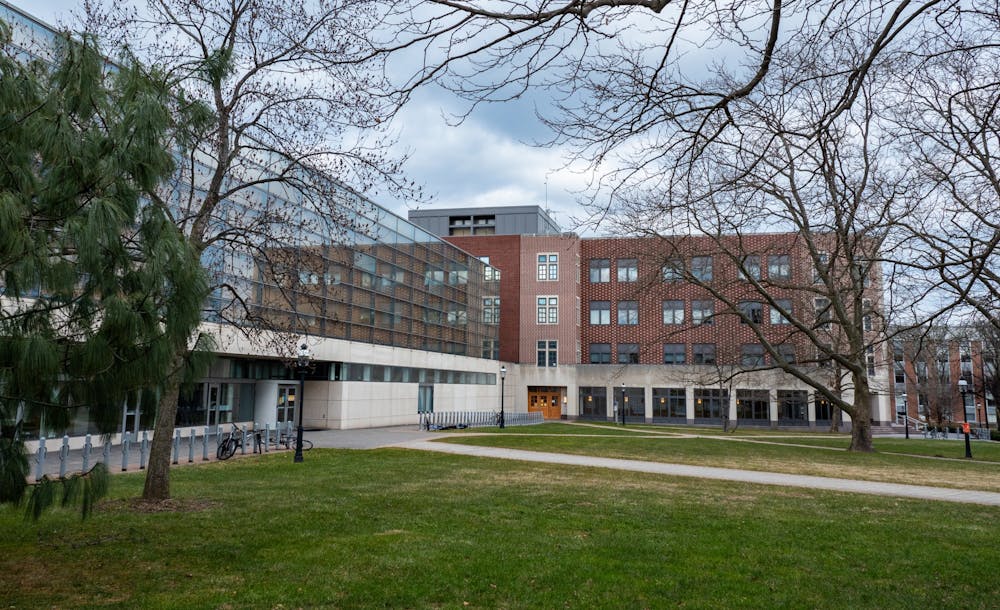A new initiative established at Princeton aims to gather talent and devote resources toward the development of artificial intelligence (AI) for academic and research purposes.
The Princeton Language and Intelligence Initiative (PLI) “seeks to develop fundamental understanding of large AI models; enable their application to research and education across academic disciplines; and study societal and ethical implications of AI as well as develop methods to avert any harms,” according to its website.
In addition to being a venue for students, researchers, and faculty members from various disciplines to collaborate, PLI will also aim to develop a robust local computing infrastructure, with its own equipment and personnel.
Sanjeev Arora, the Charles C. Fitzmorris Professor of Computer Science and a specialist in theoretical computer science and machine learning, will serve as PLI’s first director.
PLI is chiefly concerned with a set of AI systems called large language models (LLMs), which are models that have been trained with a massive amount of textual data in order to perform natural language processing (NLP) tasks such as text recognition, translation, and text prediction.
LLMs power popular AI tools like OpenAI’s ChatGPT, which was first released to the public in November 2022. PLI aims to study LLMs’ various promises and perils in academic and social contexts.
According to Arora and University Provost Jennifer Rexford ’91, the process of founding PLI, from its inception to its formal launch, took about a year. The process was accelerated by the sudden popularity of LLM-based chatbots such as ChatGPT.
As part of PLI’s efforts to adapt AI for a more research-centered purpose, PLI may develop its own LLMs that are specifically geared for tasks demanded by Princeton researchers in certain fields of study.

In an interview with The Daily Princetonian, Arora described the potential advantages of having a local computing infrastructure with its own LLMs available to Princeton researchers.
“You have a fair bit of text, and you are going to do some kind of classification, using an LLM, for instance. So, you need some smarts. It’s not just text search,” said Arora, giving a hypothetical example.
“Doing that through [the] ChatGPT interface would probably be more expensive. Given that we have the computing cluster, it will be much more feasible. Sometimes, you are going to be using proprietary data, which, for ChatGPT, may not be fair use, and so processing that locally might be legally much more feasible, although this needs looking into.”
The initiative held its launch event, AI@Princeton, in McCosh Hall 50 on the afternoon of Tuesday, Sept. 26. Rexford, Arora, and other faculty members in disciplines ranging from computer science and psychology to classics, addressed how LLMs work. They also addressed how LLMs can be adapted to advance individual fields and the social risks and challenges they carry.

In his presentation, Arora announced that PLI will soon have access to a computing budget of $10 million.
PLI’s stated mission means that its objectives will be closely related to those of other Princeton groups such as the Center for Digital Humanities (CDH), the Center for Information Technology Policy (CITP), and the Center for Statistics and Machine Learning (CSML).
In an interview with the ‘Prince,’ Rexford commented on how PLI needs to operate within the realities of the field of AI and how she envisions the initiative to grow.
“There were some presentations at the March Board of Trustees meeting, like Sanjeev Arora’s, to get them to be aware of how we are thinking about AI, and to float by them the idea that we should be thinking about this differently because it moves so quickly and that we have to position ourselves relative to industry,” Rexford explained.
“It’s hard to get government funding when a project is at such an early stage. This is getting a flywheel going. See if support for projects like large language models work,” Rexford remarked. “I don’t think these will need central University support indefinitely; that would be a failure. If we get the flywheel going, then there’s an opportunity for them to go to federal funding, foundations, and such.”
Meredith Martin, an associate professor of English and the Faculty Director of the Center for Digital Humanities (CDH), commented on the promises that PLI can bring on the human and organizational aspect.
“The possibility of being such a small place and having access to such resources can mean that we could do things faster than in other places,” Martin said in an interview with the ‘Prince.’
“If PLI succeeds in attracting, recruiting and retaining faculty who are working in this area in a diverse array of ways, not just full steam ahead, but maybe rethinking evaluative frameworks or in all sorts of different ways, then that will certainly be, I think, for the good.”
Both Arora and Martin suggested that Rexford, who served as the chair of the Department of Computer Science before becoming provost in March, likely played a pivotal role in gaining approval from the Board of Trustees for PLI.
Rexford stated that a major part of PLI’s mission is to study issues in which companies are not incentivized to heavily invest, such as research projects in the humanities and questions around how LLMs ought to be properly evaluated and governed.
PLI’s effort at procuring state-of-the-art graphics processing units (GPUs) highlights the overwhelming demand for the most advanced and high-performance semiconductor chips, most of which are produced by the Taiwan Semiconductor Manufacturing Company (TSMC).
According to Arora, the GPUs that TSMC will manufacture in the next year, including the Nvidia H100 GPUs that are the most sought-after by the private sector and by University programs such as PLI, have already been completely sold out before they’ve even been produced.
Allan Shen is a senior News writer for the ‘Prince.’
Isabel Connolly is a contributing News writer for the ‘Prince.’
Please direct any corrections requests to corrections[at]dailyprincetonian.com.








